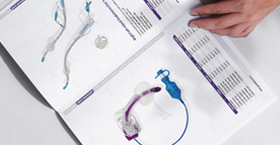Selecting the correct Foley catheter size according to patient age is essential to ensure effective drainage while minimizing urethral trauma and patient discomfort. The French (Fr) scale measures catheter outer diameter, with 1 Fr equal to 0.33 mm. Proper sizing enhances urinary flow, reduces leakage around the catheter, and lowers the risk of catheter-associated urinary tract infections (CAUTIs). In neonatal and pediatric populations, the urethral lumen is much smaller and more delicate than in adolescents and adults, requiring smaller, more flexible catheters. For older children and adolescents, sizing approaches adult recommendations but still considers individual anatomy and clinical context. Below is a summary of age‐based Foley catheter sizing guidelines, alongside typical balloon capacities and key considerations for each group.
| Age Group | Recommended Size (Fr) | Balloon Capacity (mL) | Key Considerations |
|---|---|---|---|
| Neonate (0–1 month) | 5–8 Fr | 3–5 | Use smallest size; extreme lubrication; gentle insertion |
| Infant (1 month–1 year) | 6–10 Fr | 5–10 | Monitor for urethral irritation; consider hydrophilic coatings |
| Young Child (1–5 years) | 8–12 Fr | 10–15 | Size up cautiously; secure catheter to prevent accidental dislodgment |
| Older Child (6–12 years) | 10–14 Fr | 10–20 | Ensure proper stabilization; verify patient comfort |
| Adolescent (13–17 years) | 12–16 Fr | 15–30 | Similar to adult protocol; adapt for individual anatomy |
| Adult Female | 14–16 Fr | 10–30 | Balance comfort and drainage needs; latex‐free preferred |
| Adult Male | 16–18 Fr | 10–30 | Consider urethral length; check for strictures or obstructions |
In addition to size, clinicians should verify balloon material, lubrication type, and catheter length before insertion. Silicone catheters offer longer indwelling times and lower irritation risk, while PVC models may be more cost‐effective for short‐term use. Adequate patient education on catheter care and regular monitoring of urine output, catheter patency, and insertion site are crucial for preventing complications. When unusual anatomy or urethral resistance is encountered, consultation with a urologist and use of smaller or tapered‐tip catheters may be warranted. Through adherence to age‐appropriate sizing guidelines and careful device selection, healthcare providers can optimize both safety and comfort during Foley catheterization.


 Français
Français Español
Español Products
Products

 About Us
About Us











